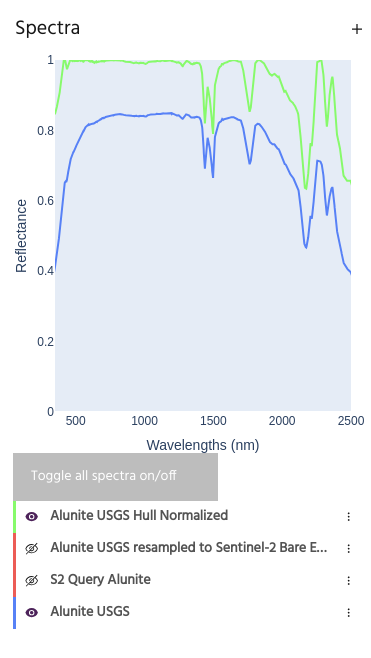Spectra in Marigold
Spectral information, whether computed from a multi or hyperspectral dataset, collected from a spectrometer in the field, or assayed in a lab (phrasing bad), are a critical component of a remote sensing workflow. Marigold has several tools for integrating spectra from disparate sources into a project.
Compute spectra from raster data
Once a multispectral or hyperspectral layer is loaded into Marigold, spectral
information can be computed directly from the layer bands. Note that the bands
need to have their wavelength information stored in the Platform product. Data
managed by EDA, such as the Bare Earth Composites and public hyperspectral
datasets, have this by default. For personal products, ensure that at least the
wavelength_nm_center property is defined for all spectral bands. Contact
support for assistance with correctly loading data.
Spectral query - Compute spectra of individual points
Compute spectrum over vector - Compute average spectrum
over a vector.
Load spectra from external source
Spectra can be brought in from external sources, such as field spectrometers or ENVI formatted files. In addition to loading external spectral files, the USGS spectral library is available for all users. Similar libraries can be hosted as well, contact support for more information.
Load from file - Load spectra from a file such as an ASCII
from ENVI or .ASD from a spectrometer
Add from library - Load spectra from the USGS (or others
if available) spectral library
Save a spectral library
Spectra in a Marigold project can be saved to a spectral library or exported to a Marigold or text files.
Save to a library
- From the Spectra menu, select
Save spectra to spectral library.

- Select spectra to export, add a description to each, and add the name of the
project. If the project was loaded from a previous
project, the name will already be loaded.
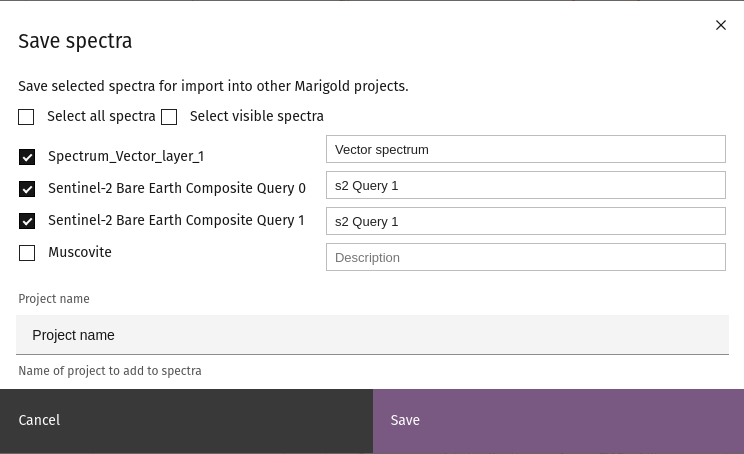
- Click
Saveto export the spectra to your spectral library. All spectra will be saved to the same library that can be accessed in the Add from library dialog.
Save to an external file
- From the Spectra menu, select
Download MG spectral library.
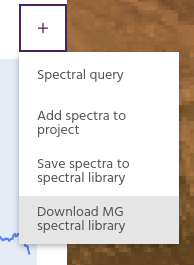
- Select spectra to export. For convenience, all spectra or visible spectra can
be selected with one click.
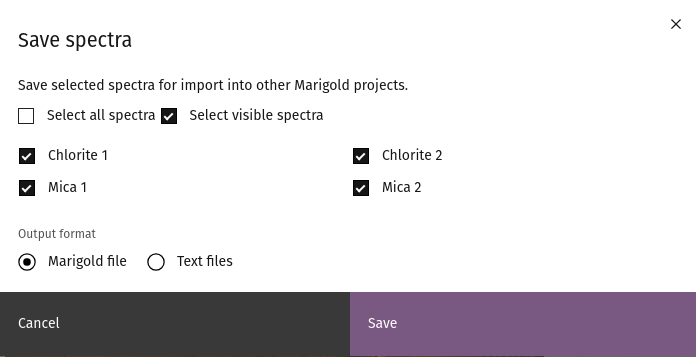
- Choose whether to save the spectra as a Marigold library which can be imported into a new Marigold session, or as text files.
- Click
Saveto save the file to your local computer.
Operations on Spectra
Once spectra are in your project, there are a few operations that can be performed on them.
Resample spectrum
Often, spectra from labratory spectrometers can be much higher resolution than the multispectral imagery against which they are compared. Such high resolution spectra can be resampled to the resolution of a raster layer for better comparisons.
- From the overflow menu of a spectrum, select
Resample.
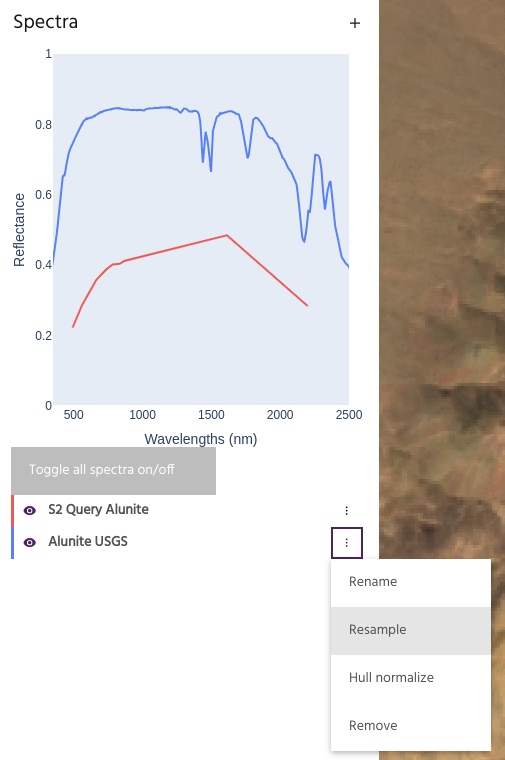
- Choose the layer and bands to which you want to resample the spectrum, and
choose to resample using Gaussian functions or true instrument spectra. Note
that instrument spectra are only available for EarthOne Bare Earth
Composites.
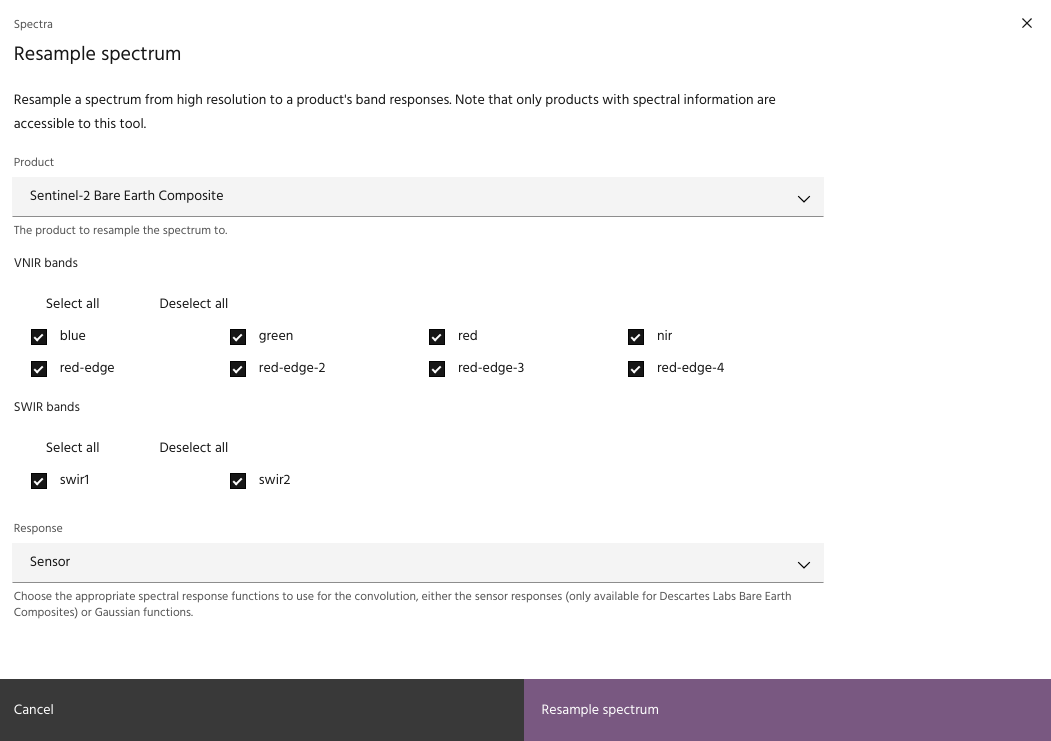
- Click
Resample spectrumto load the resampled spectrum into the project.
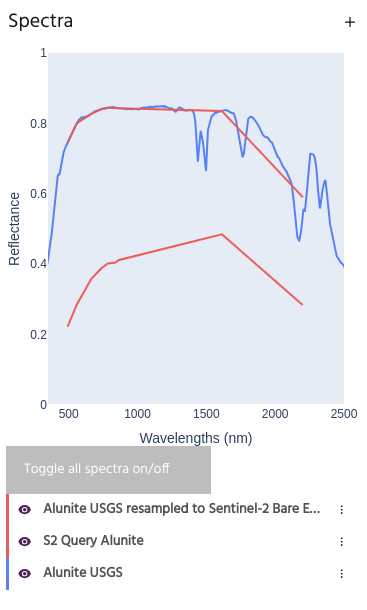
Hull normalization
Hull normalization is a process where the spectrum is normalized by its convex hull. This process is used to highlight absorption features of spectra, and is a useful for step for further compositional mapping.
- From the overflow menu of a spectrum, select
Hull normalize.

- Type in a name for the new spectrum and click
Hull normalize spectrum.

- The hull normalized spectrum is now loaded into the project.
